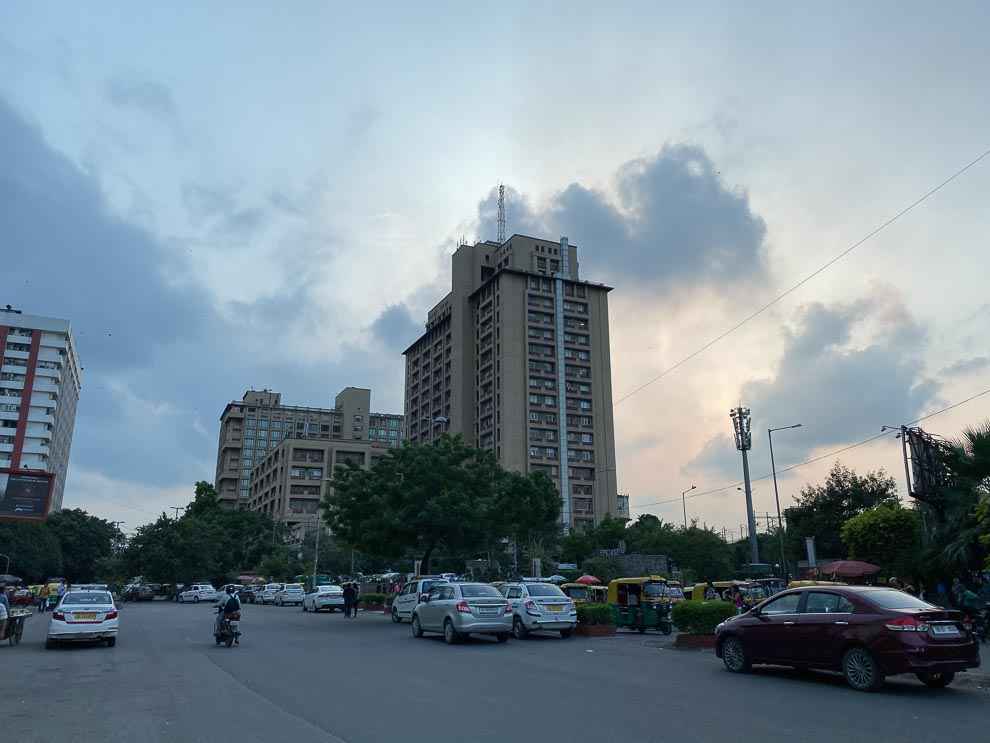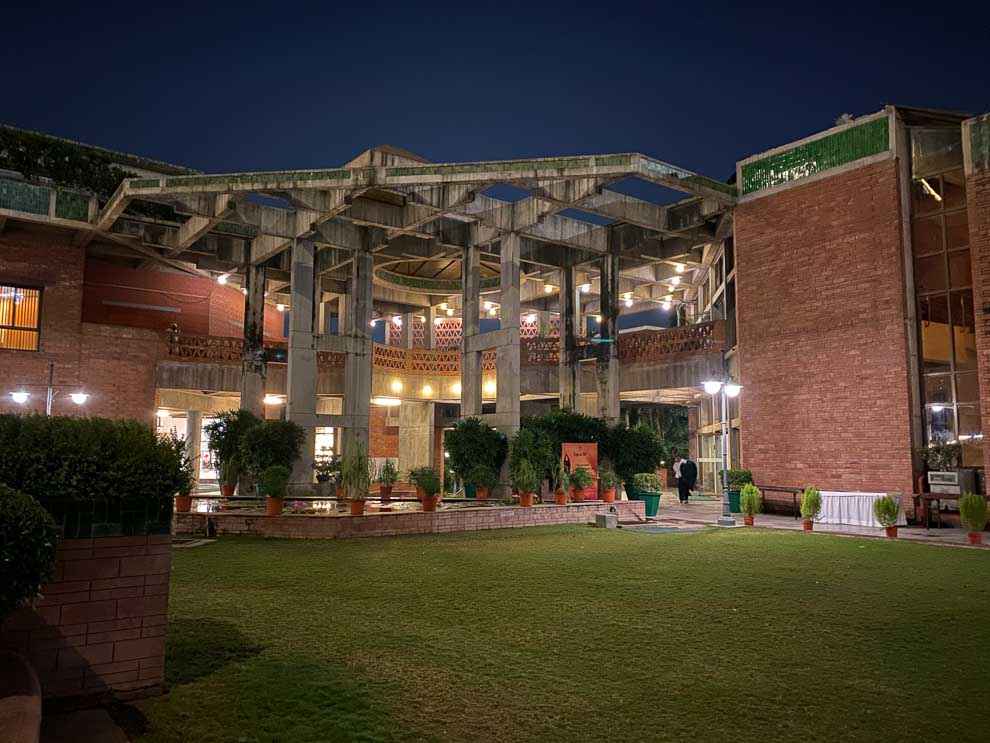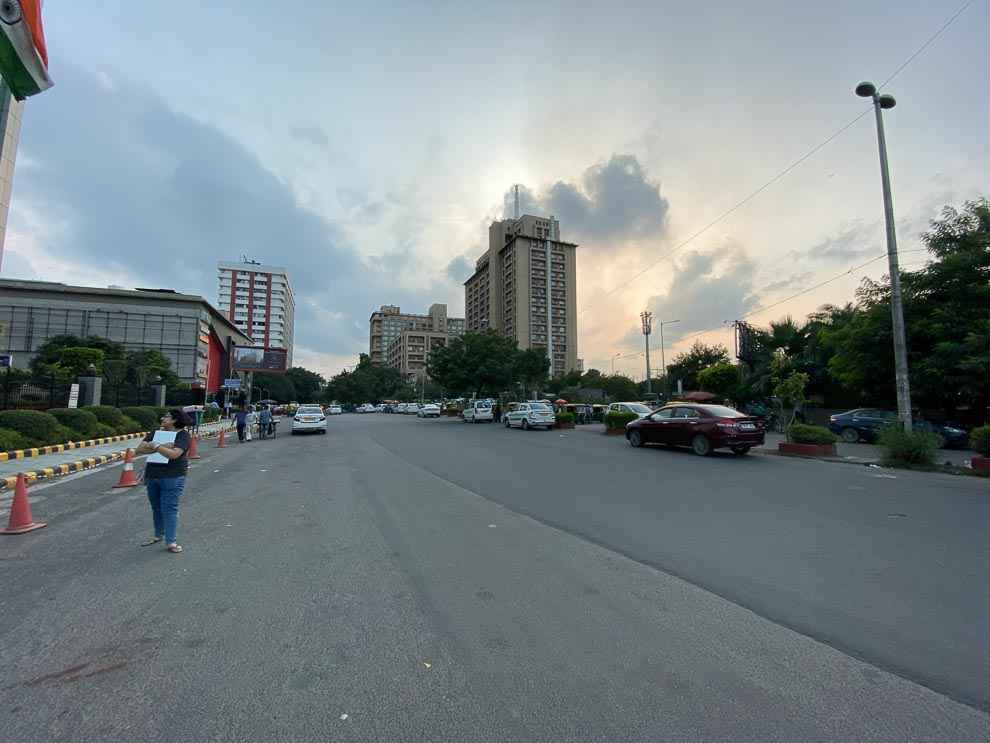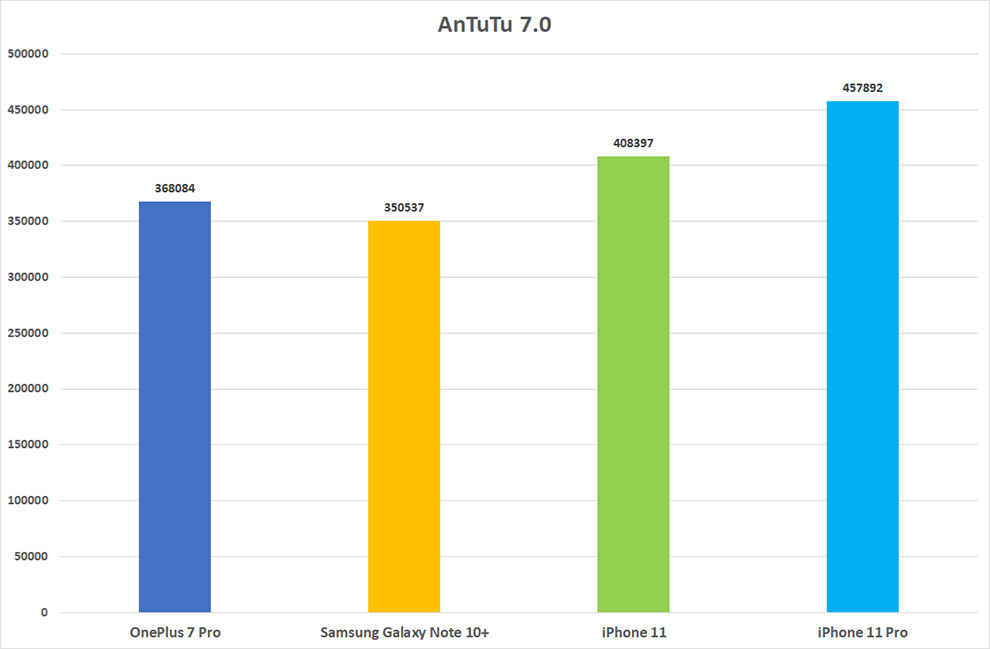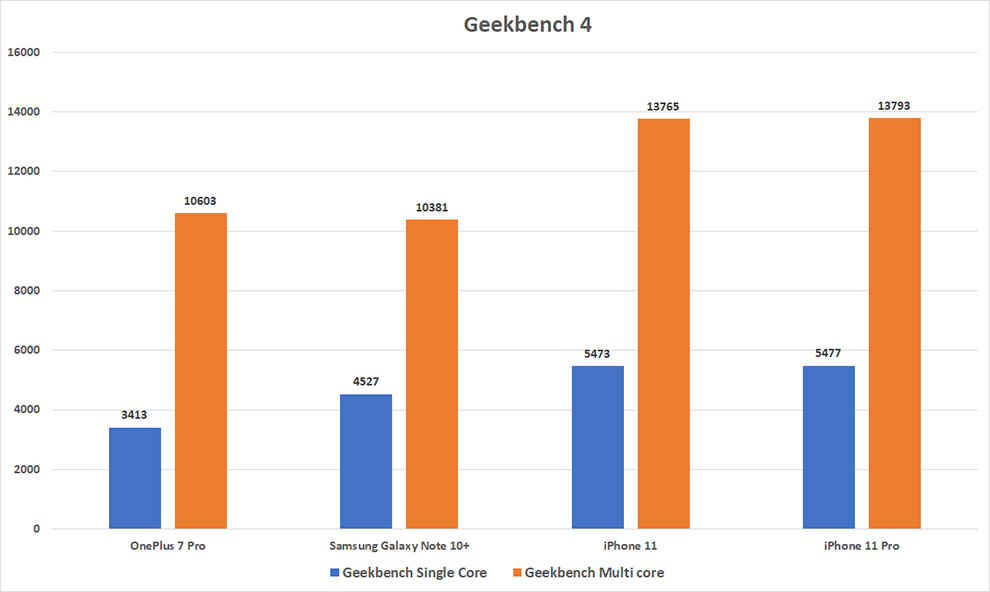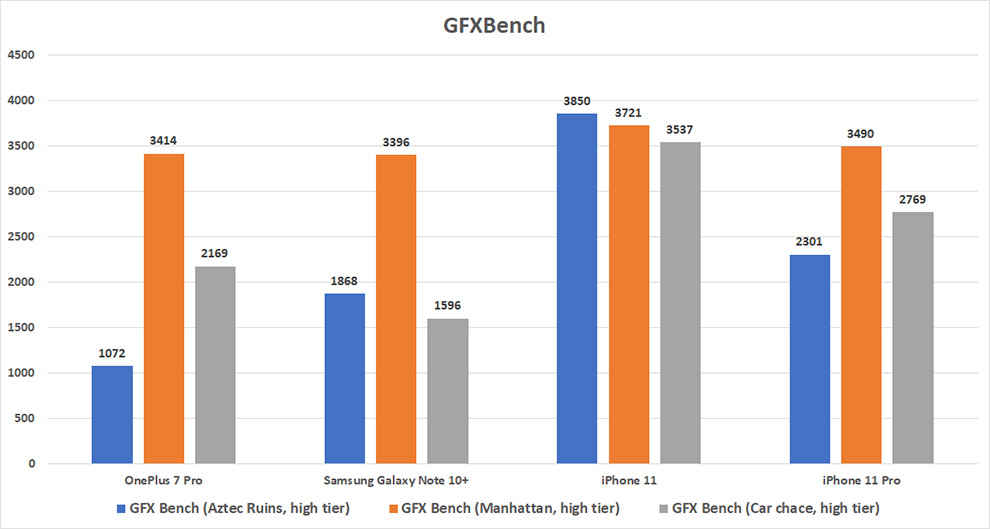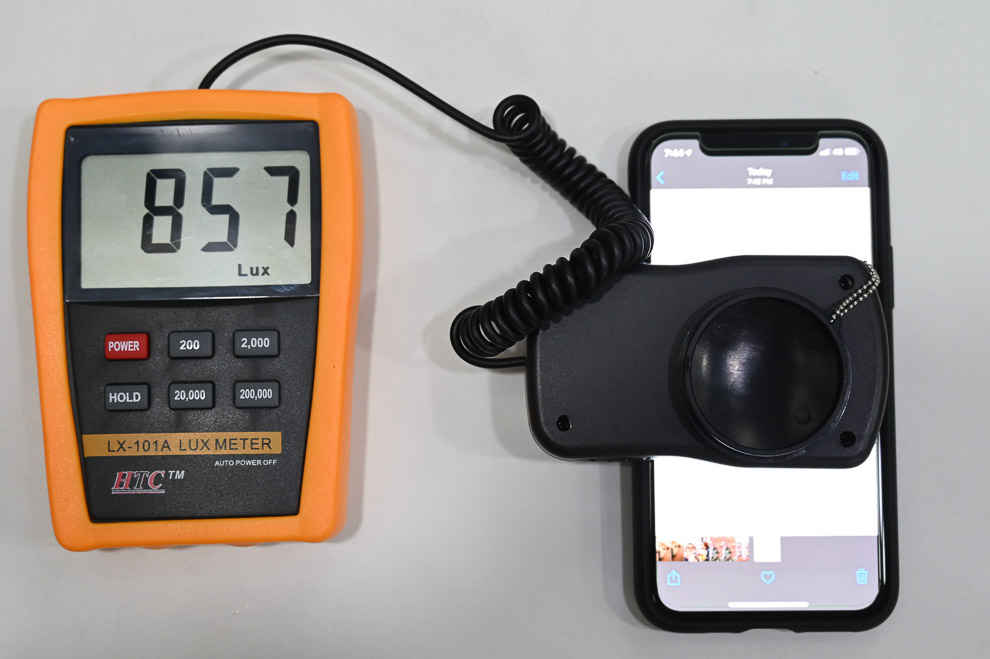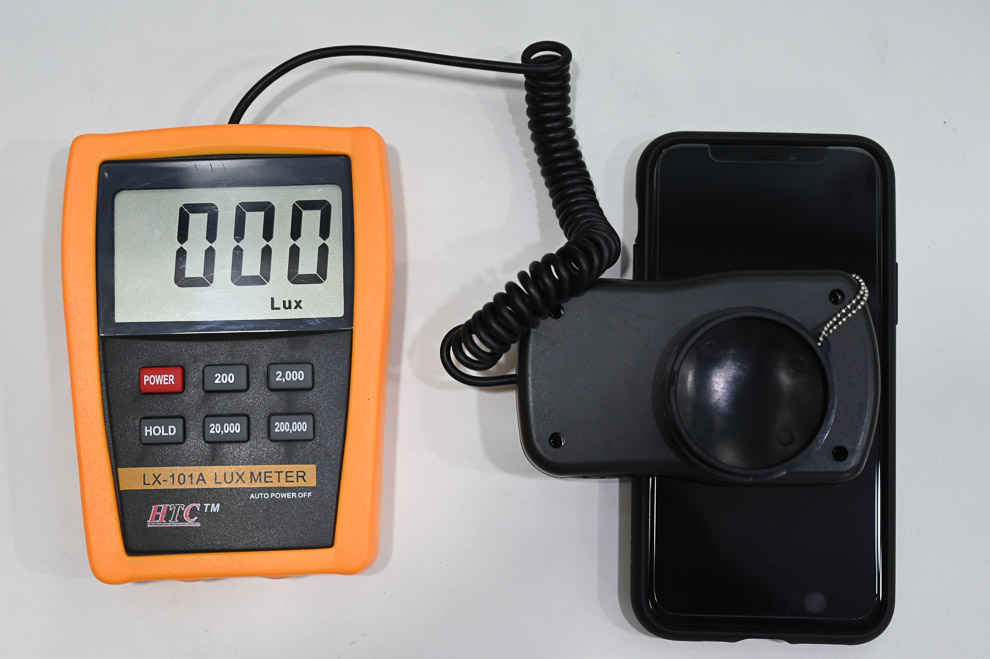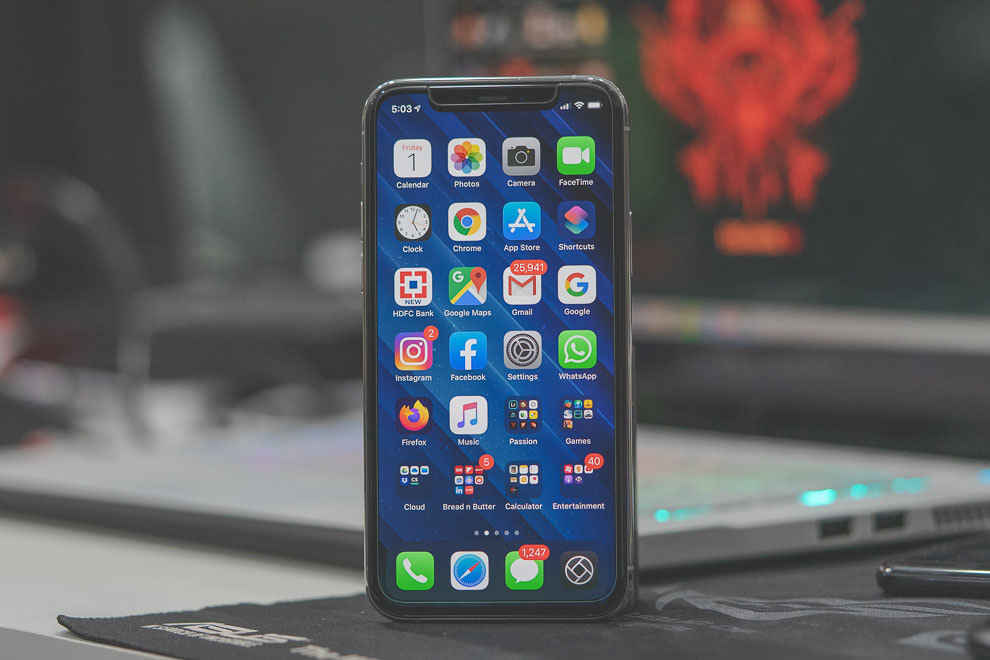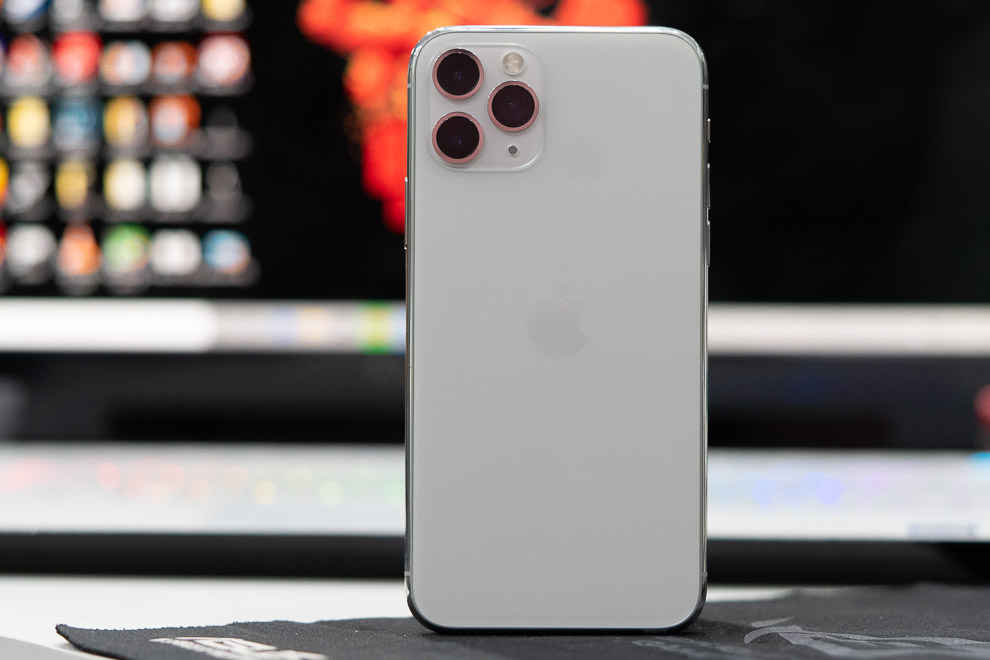Apple iPhone 11 Pro Review : Apple hit it out of the park with this one
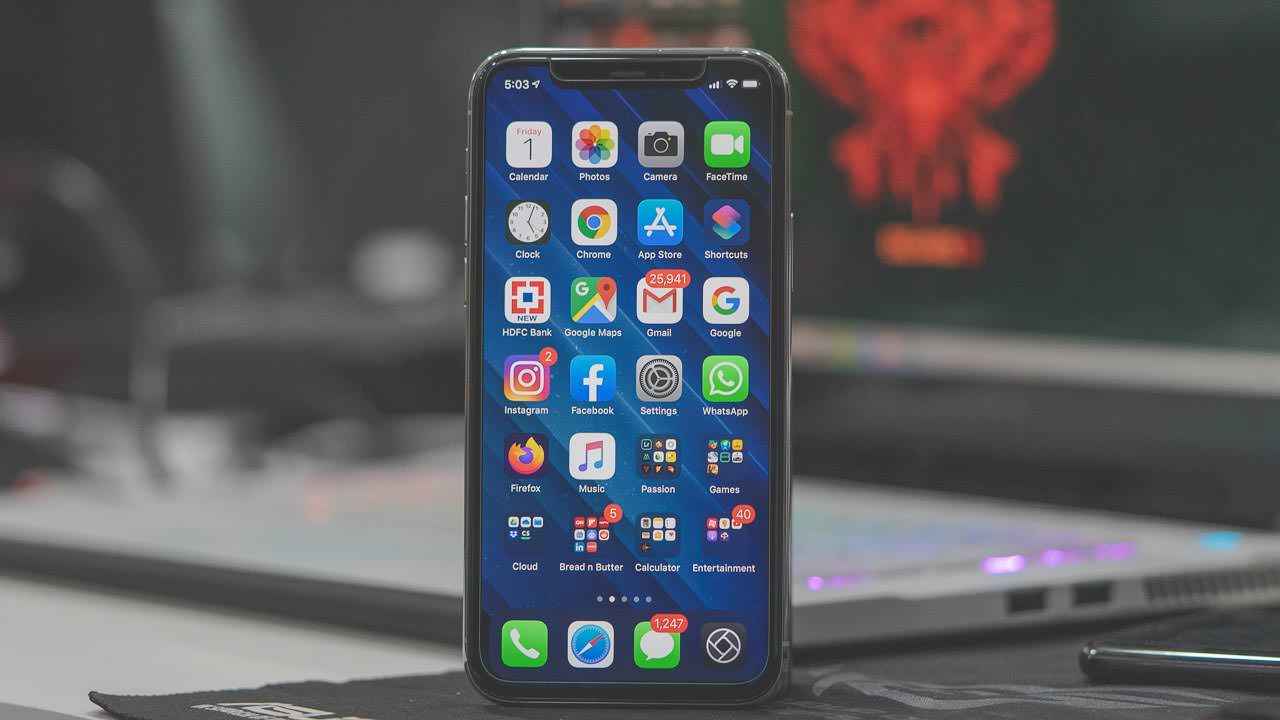
The new Apple iPhone 11 Pro gets a lot of things right. The camera is significantly better than last year's and gives stiff competition to this year's best Android-based smartphones. Its performance leaves the competition lagging far behind and thanks to iOS 13's dark mode and the A13 Bionic's clever design, we also got a very impressive battery life of a day and a half, consistently. It is hard to find faults with the iPhone 11 Pro, although some may argue that the price would be one. However, whoever does buy the new iPhone 11 Pro is going to have a hard time finding faults with this one.
The 2019 iPhone lineup may not appear to be a whole lot different from last year on paper. Cosmetically, the iPhone 11 Pro trades the iPhone XS’s clear glass back for a frosted finish, and of course, adds a third camera to the back. On the inside, however, almost every aspect of the iPhone 11 Pro is an upgrade from its predecessor. We’ve spent the last few weeks testing every aspect of the iPhone 11 Pro and in this review, we will probably have all the reasons you’re looking to justify buying the phone or giving it a pass.
Camera Performance
We tested the iPhone 11 Pro’s camera across a variety of real-life shooting situations using the stock camera app. Additionally, the Deep Fusion functionality was not yet enabled on our phone.
The Apple iPhone 11 Pro continues to sport a 12-megapixel sensor and an f/1.8 lens, two things that have been staple on the iPhone’s primary camera for quite a few years now. What has seen a notable improvement is the aperture on the telephoto lens, which has gone from f/2.4 to f/2.0, currently the largest on a telephoto lens on a smartphone camera. The wide-angle lens has an aperture of f/2.4. All three sensors have the same resolution of 12 megapixels.
Note: All camera samples below have been resized for web. You can view the full-resolution samples in our Flickr Gallery here.
Daytime
During the day, the iPhone 11 Pro shoots images that exhibit impressive traits. For starters, one of the most evident features is the detail reproduction. In the following samples, you can see just how well the iPhone 11 Pro reproduces fine detail in the subject matter.
In addition to good detail reproduction, we also see impressive HDR processing from the iPhone 11 Pro. The HDR processing allows the photos of have expanded dynamic range, one that yielded results that made us look twice. Apple has implemented new Smart HDR algorithms that uses machine learning to identify the subject and the background, relighting them appropriately and independently. All this is done on not one, but multiple exposures and blended together and done well enough for there to be a complete absence of the typical HDR halation (glare) we see when shooting in strong lighting conditions. Samples below.
Low Light – Meet the new Night Mode
Ever since the Google Pixel introduced Night Sight, specialized modes for shooting in low light have all been the rage. It was only expected that Apple too would bring something like to the iPhone, but their implementation requires some note. For starters, there is no dedicated Night Mode on the iPhone. It is automatically triggered when the system detects the scene to be dimly lit. While you may not have a choice of triggering the mode, you do get to choose the duration of the exposure, anything between 1 second to 3 seconds. If the phone is mounted on a tripod or on a stable surface, then you can stretch the exposure to 10 seconds.
3 second low light exposure on the primary camera
3 second hand-help exposure from the telephoto lens
While using the iPhone 11 Pro in low light situations, Night Mode is only available for the wide angle and telephoto lenses. For both the lenses, hand-holding the phone for up to three seconds works just fine. That bit is important. What is also important is to know that the iPhone is not shooting one long exposure, but instead shoots multiple exposure and blends them together in a way very similar to the way it handles Smart HDR. The results, are just down right impressive. Not P30 Pro impressive, but still incredibly impressive. Especially when you factor into account the fact that you’ve got an f/2.0 aperture on the tele-lens. We note that images shot in the Night Mode of the iPhone 11 Pro look more like long exposures than they do like HDR images, a major plus. Enough talking, so here are some samples for you to enjoy.
Ultra-Wide-Angle-Limited-Lens
The ultra-wide-angle lens on the iPhone 11 Pro is a brand-new addition, a first gen-product of sorts. Given that, it has several shortcomings. First and foremost, it lacks any kind of autofocus, which is gravely disappointing. Second, in some photos, the vignette is extremely evident, and it doesn’t always add a “pleasing effect.” What is commendable on Apple’s part is the well controlled distortion on the lens. The 13mm field of view is often susceptible to plenty of barrel distortion, but the wide angle lens on the iPhone 11 Pro avoids that to a great degree. Here are some samples for your perusal.
Telephoto Lens
The Apple iPhone 11 Pro uses a 12 megapixel sensor paired with a 52mm lens to offer a telephoto perspective. This focal length has traditionally been one of the most common for shooting portraits. However, telephoto lenses on smartphones have had an aperture of f/2.4 (or smaller), preventing them to truly generate that bokeh naturally. On the iPhone 11 Pro, Apple achieves an f/2.0 on the telephoto lens, a first in the industry. This allows for two things with the telephoto lens. First, it does improve the bokeh ever so slightly when taking portraits (not in portrait mode, just regular portraits). Second, due to the larger aperture, Apple was able to enable Night Mode on the telephoto lens as well. Here are some results from the telephoto lens that definitely impressed us.
In the past, the iPhone has always had good imaging performance, but it has leaned more towards the side of "reliable" than "stellar." This year, the iPhone 11 Pro ends up not being just reliable, but also damn near perfect as a smartphone camera. It has outperformed all the camera smartphones we have tested so far this year when it comes to detail retention, AF performance and of course, ease of use.
Performance
Besides the upgraded camera stack, the new A13 Bionic SoC is the other major highlight of the phone. The chip features a hexa-core processor with 4 efficiency cores and 2 performance cores. There’s a quad-core GPU baked in as well, but the really impressive work here is how Apple claims that they’re able to turn on and off circuits and gates based on the task being performed.
Measuring the performance of the iPhone 11 Pro, we find absolutely no surprises. The new A13 Bionic chip surpasses benchmark figures across all flagships, scoring in the highest range as expected. Without getting into the specifics, we’re just going to lay out all the benchmark numbers in the charts below.
While benchmarks can sometimes be reflective of ideal scenarios, the real-world numbers could be different. We tested the iPhone 11 Pro’s real world capabilities using Gamebench, which allows us to record median frame rates and the average CPU-GPU usage as well. We played a number of popular titles on the iPhone 11 Pro and found its performance to be impressive, just like always. The iPhone delivers 59 fps on Asphalt 9, PUBG Mobile and Call of Duty Mobile consistently. The stability is also in the 95 percent (or higher range). Needless to say, gaming or any other kind of heavy tasks are not a problem for the A13 Bionic powering the iPhone and when you factor in the fact that the phone only has 4GB of RAM, you can’t help but be impressed with what Apple has achieved.
No matter which way you look at it, the iPhone 11 Pro is running on the fastest hardware in the market at the moment, and you’d be hard-pressed to find any faults or slow-downs here.
Battery Life
Continuing on the hot streak of notable improvements to this year’s iPhone, we have the battery. Last year’s iPhone XS had a battery capacity of 2658mAh whereas now, we have a slightly bigger battery measuring in at 3046mAh. With a bigger battery, some crazy optimisations in the SoC design and iOS 13’s Dark Mode, Apple claimed up to 4 hours more battery life. Turns out, that’s not entirely correct. The managed to get even longer battery life out of the iPhone 11 Pro.
On Geekbench 4’s battery test, the iPhone 11 Pro lasted 6 hours and 48 minutes. On our video loop test, the phone fared better, delivering 9 hours of constant video playback using VLC and a locally stored mp4 video file. An hour of navigation using Apple Maps cost us a 10 percent battery penalty. In day to day use, however, the iPhone 11 Pro was downright impressive, delivering anywhere between five to six and a half hours of screen on time, consistently.
Thankfully, Apple finally bundled an 18W fast charger in the box and there’s a Type-C to Lightning cable in there as well. The iPhone 11 Pro charges back up to 100 in 86 minutes using the stock charger and cable, which is not bad at all. Since the iPhone uses USB-PD, you can buy any charger that also supports it and get fast charging anywhere other than your home. Either which way, the iPhone 11 Pro finally changes the bad reputation when it comes to battery life for this particular form factor.
Display
The iPhone 11 Pro sports a 5.8-inch 60Hz OLED panel with a resolution of 1125×2436. The display supports 100 percent DCI-P3 coverage, and due to that, you get Dolby Vision playback abilities and even support for YouTube HDR.
The iPhone has traditionally had one of the most accurate colour reproductions in the business, but this time around, we also noted an extremely bright display. While the iPhone 11 Pro’s display should theoretically hit over 1000 nits of brightness during playback of HDR content (provided the HDR metadata requires it), in regular use, the peaked at 857 nits of brightness and the lowest it can go is 4 nits. What this means if that you’ve got an excellent pane for use in bright daylight and even in pitch dark.
The Apple iPhone 11 Pro has one of the brightest displays we've tested this year
As an OLED display should, the iPhone 11 Pro's display registers a reading of 0 on our lux meter
Frankly, the iPhone 11 Pro’s display is one of the best in the business and you’d be hard-pressed to find anything to complain about. Sure, the notch continues to be present, but it really doesn’t get in the way of anything since content, whether its video or games, adapt very well to it. It really doesn’t need to be said, but good luck finding faults with this panel.
Build and Design
The iPhone 11 Pro continues to use the identical design specs as the iPhone X that introduced this new look. There are only two visible changes to the design this year; the camera module on the back and the finish on glass back. Other than that, the design remains the same.
The iPhone 11 Pro is identical to the iPhone XS and the iPhone X when seen from the front
The frosted finish of the back does look nice
Our silver iPhone 11 Pro comes with a frosted white back, which I liked, but the finish may not be everyone’s cup of tea. What is, however, getting unanimous dislike from a lot of people is the triple camera layout. The lenses appear to be too big and the square bump housing them is just awkward. And while you may voice your distaste for it, its actually the ONLY thing that sets the iPhone 11 Pro (and its bigger brother) apart from every other smartphone in the market.
iOS 13
One of they key reasons for the iPhone 11 Pro’s stellar performance is iOS 13. If you consider the long battery life, it can be attributed in part to the dark mode which does extend battery life by a considerable amount. The tight integration with the SoC allows the OS to offer an incredibly fluid experience, not just while gaming or multi-tasking, but also while something as simple as scriolling through a browser window or between apps. This is in part due to the 120Hz polling rate for touch input.
One key element of iOS 13 that makes the iPhone a lot more desirable is the fact that Apple has finally enabled external drive support. Plug in a USB drive (with a lightning connector) and it will pop up in the Files app and you can easily move things around. This also applies to being able to download things using a web-browser and saving them onto the internal storage.
Overall, the iOS 13 experience continues Apple’s tradition of delivering solid, consistent and feature-rich experiences to iOS users. Could it have more? Absolutely. However, for all that it does offer, iOS 13 is a pretty solid release by Apple.
Bottomline
The Apple iPhone 11 Pro continues the trend of pricey iPhones, but unlike last year, this year’s iPhone definitely makes a very strong impression. When you consider that it outperforms every Android flagship in the market at the moment, that it has a camera that delivers stunning images and also manages to offer excellent battery life, its hard not to be impressed. Yes, the iPhone 11 Pro is expensive, but anyone who was to buy one, would in all likelihood not have any regrets.
Swapnil Mathur
Swapnil was Digit's resident camera nerd, (un)official product photographer and the Reviews Editor. Swapnil has moved-on to newer challenges. For any communication related to his stories, please mail us using the email id given here. View Full Profile



